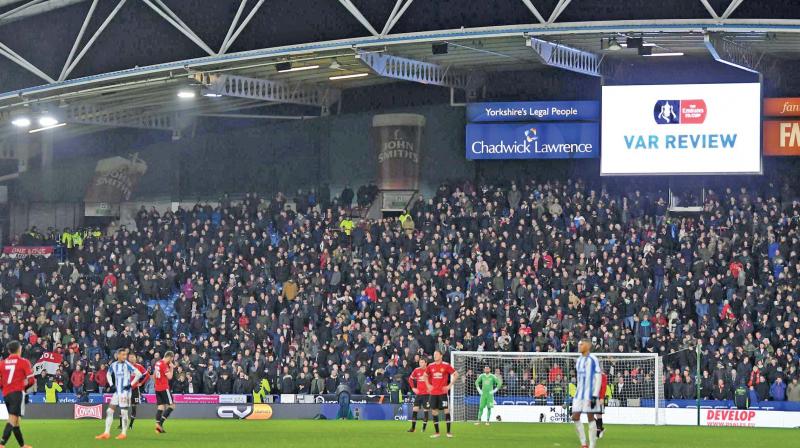Video Assistant Referees are here to stay in game

The technology is amazing. Such a statement would obviously not come from a Luddite and we know the world is half filled with them. The talk at the pubs and the drawing rooms these days are to do with the Video Assistant Referee, better known as VAR, and football fanatics forming a square with their hands asking for a replay each time they think they have spotted a foul against their favourite team.
The surprising thing about it all is it took so long for football to discover that the candid cameras can help the soccer become a fairer game.
The curious thing is Team VAR operates out of Moscow regardless of where the game is being played. And the team consists of one lead official plus three assistants with access to all 33 broadcast cameras in the stadium (12 slow-mo) plus two cameras for spotting offsides with computer-generated lines projected on to the field, much like the cricket pitch map, to help arrive at a correct decision.
Apparently, the knockout games will have more super slow-mo cameras behind the goal line lest there be any chance of a repeat of 1966 and all that.
FIFA appears confident that its fibre-linked radio system is fail proof and that it is possible to use the high tech from a control room far from the madding crowd, as it were. The difference between the tech as used in say cricket or tennis where a review has to be asked for by a team, player, or umpire, football prefers to let the referee on the field remain the central figure whose authority is not to be diminished by his having to wave the review signal. Of course, the reviews are to be used only in "game changing" incidents, as is the FIFA rule and they are defined as goals, penalty decisions, red cards and so on.
How has it worked so far? Well, as in cricket replays, there are always mixed opinions. The cricket review system has been refined over the years, although it is still a tad suspect when it comes to its predictive part as in judging where the ball may have gone, as in the LBW reviews.
The Australians, ironically playing football than cricket these days, were certain they were hard done by in the first review that cost them a game. That was also the first ever VAR assisted penalty decision, favouring France.
Things that go around must come around, as they say. Australia had its compensation when the ball struck the Dane Yussuf Poulsen's hand and VAR spotted it, leading to Mile Jedinak converting and giving Australia a lifeline in the competition. On both occasions, the factual position was what was decided upon with the help of VAR. But, unlike in cricket's DRS, VAR does not give the decision as such, save in conveying factual positions like whether the ball had crossed the goal line. It is up to the referee to take the final call based on the rendering of the VAR evidence.
This was a bit of a shock for Brazil when it was so busy searching for a goal against Costa Rica. The referee awarded a penalty but on forceful arguments from the Costa Ricans, he consulted VAR only to decide the foul against Neymar was not so serious and that he had erred when he had pointed to the spot. Had the game ended in a draw, the Brazilians would have been very sore about the turn of events involving VAR. As luck would have it, they found their shooting prowess in injury time to emerge strong enough to keep their favourite tag intact at a best price of 4-1 or 4.25-1.
On the whole, soccer has matured to the extent of taking the aid of the most modern camera technology to make itself a more equitable game. It is arguable whether the system is better in that the man on the field still wields all the power, even if he is in constant touch with VAR all the time over the headphone.
All the objections about a free-flowing game being interrupted by referrals have proved to be unfounded. The referees have been very good in choosing when to refer to VAR by trotting off to the centre line to check the video.
Those opposing technology can say what they wish but, it appears, VAR is here to stay. And the beautiful game got better because it learnt a lesson from cricket, tennis, basketball, American football and many other sports that have adapted technology to make their sport better. It will not suffice in 2018 to say that to err is human and that errors of human judgment must be permanently excused. The referees on the field need all the help they can be given.
(R. Mohan is the Resident Editor of the Chennai and Tamil Nadu editions of Deccan Chronicle)

